Japanese Tattooing from the Past to the Present
by Mieko Yamada
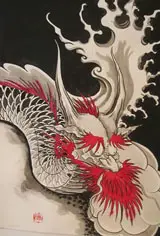 The Jomon to the pre-Edo period
The Jomon to the pre-Edo period
The origin of tattooing in Japan has been traced back to the Jomon period (10,000 B. C. ~ 300 B. C.). Jomon means “pattern of rope.” Many ceramic pots with markings of rope were found in that period. Clay figurines produced in this period are called dogu. Scholars consider that some dogus show tattoo-like markings on their faces and bodies. The oldest dogus whose faces have a depiction of tattooing were found near Osaka in 1977. They are estimated to date from dated the fifth century B. C. (Richie,1980). During the Yayoi period (300 B. C. ~ 300 A. D.) clay figurines with tattoo markings were also found (Yoshioka, 1996).
The custom of tattooing in Japan is described in the third century Chinese history,Gishiwajinden, which is the oldest record mentioning Japan. Japan is called Wa, and the custom of tattooing is mentioned in this text:
The men of Wa tattoo their faces and paint their bodies with designs. They are fond of diving for fish and shells. Long ago they decorated their bodies in order to protect themselves from large fish. Later these designs became ornamental. Body painting differs among the various tribes. The position and size of the designs vary according to the rank of individuals…. They smear their bodies with pink and scarlet just as we Chinese use powder (Tsunoda and Goodrich, cited by Dalby, 1993: 22).
The Kofun period (300 A. D.- 600 A. D.) came after the Yayoi era. The word kofun means an old tomb. In this period, hilly tombs in many places were made, and the clay figures in the shape of dolls, horses and huts were also found in the tombs. The clay figures are called haniwa, which is the counterpart of dogu in the Jomon era. Markings on some haniwa are regarded as patterns of tattoos.
In 622 A. D., an envoy of China recorded the custom of Japanese tattooing in Zuisho. There is a section, “Ryukyu kokuden” in it, and the practice of tattooing among the Ryukyu women is described. The Ryukyu islands are today in Okinawa prefecture, the southern most part of Japan. When it was an independent country it was threatened by the rule of China and Japan.
This record, Zuisho, shows Okinawa and Taiwan already established trading in those days. However, it is not confirmed whether Ryukyu in Zuisho itself refers to Okinawa or Taiwan. Many scholars state that the design of Okinawan tattoo is similar to the tattooing style in a part of aboriginal Taiwanese (Yoshioka, 1996). The Okinawan tattoo may be connected not only with the custom of tattooing in Taiwan but also with South East Asia.
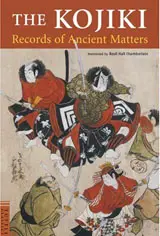 It was not until the eighth century that the first Japanese printed books appeared. The Kojiki(712 A. D.) mentions that there are two types of tattoos. One is a mark of distinction on a man of very high status, and the other is to identify criminals (McCallum, 1988). Later, the Chronicles of Japan, the Nihonshoki, was complied in 720 A.D. According to the Nihonshoki, a person named Azumi no Murajihamako was tattooed as punishment for treason. This was an example of the punitive application of tattooing. McCallum (1988) summarizes the practice of Japanese tattooing during the Kofun period. In the early Kofun period, the tattoo persisted as a socially acceptable practice. However, it seems to have acquired negative associations, perhaps from the middle of the period (McCallum, 1988).
It was not until the eighth century that the first Japanese printed books appeared. The Kojiki(712 A. D.) mentions that there are two types of tattoos. One is a mark of distinction on a man of very high status, and the other is to identify criminals (McCallum, 1988). Later, the Chronicles of Japan, the Nihonshoki, was complied in 720 A.D. According to the Nihonshoki, a person named Azumi no Murajihamako was tattooed as punishment for treason. This was an example of the punitive application of tattooing. McCallum (1988) summarizes the practice of Japanese tattooing during the Kofun period. In the early Kofun period, the tattoo persisted as a socially acceptable practice. However, it seems to have acquired negative associations, perhaps from the middle of the period (McCallum, 1988).
Between 600 A.D. and 1600, there is little literature regarding the custom of tattooing. Tamabayashi (1956) and Van Gulik (1982) state the Joei Code issued in 1232 mentions penal tattooing. According to some scholars (Richie; 1980, Van Gulik; 1982), tattooing was used to mark and distinguish the social outcasts. Consequently, the people who were tattooed as punishment formed minority groups, called eta (the euphemism of village people) and hinin (non-humans).
Iizawa (1973) and Tamabayashi (1956) report that the custom of tattooing is also found among Samurai warriors in the sixteenth century. In certain areas, the samurai had tattoos for identification.
Soldiers wore armor and had other identifying belongings, of course, but scavengers often stripped dead bodies on a battlefield , which made identification difficult. Tattoos offered certain identification (Iizawa, 1973; 252).
During the Tensho era (1573~1591), the samurai soldiers of the Satsuma clan (now Kagoshima region) were tattooed with Japanese characters on the upper arms. However, this information is not clearly confirmed.
Tattooing in the Ainu and the Ryukyu
Ryukyu tattooing was first mentioned in 1461. However, some scholars consider the description of tattooing in theZuisho of 622 to be the oldest record of the Ryukyu tattoo even though this information is still speculative (Yoshioka, 1996). The oldest reports of Ainu tattoos were recorded by an Italian researcher, Girolamo de Angelis in 1612 and 1621 (Yoshioka, 1996). The Ainus were tattooed on the face as well as the back of the hands and arms. The tattoos were done around the lips, cheeks, the forehead or the eyebrows. There are several motivations for Ainu tattooing: cosmetic purposes, tribal purposes, sexual maturity, religious purposes and adornment. Although only the Ainu women’s tattoos were mentioned in most cases, it was also reported that the men were tattooed in some regions (Takayama; 1969, Yoshioka; 1996).
Ainu girls were first tattooed when they were 10 to 13 years old. Some women started when they were 5 or 6 years old. Their tattoos were completed by the time they reached marriageable age. The patterns of the Ainu tattoos are related to their tribal clothing.
Tosabayashi (1948) presents the study on the patterns of the Ainu tattoo in detail. He mentions that the patterns of the tattoos are similar to the chastity belt that the Ainu women wore, and that Ainu tattoos symbolize virtue or purity. The Ainu tattoo is also used for protection from the atrocities committed by other tribes.
The Ryukyu tattoos, on the other hand, were done on only the back of the hands, including the fingers, the wrists and the knuckles. There are no examples of facial tattoo (Glacken, 1955). Tattooing is not practiced in every Ryukyu island. In some parts, both men and women got tattooed, but in others, only women had tattoos. In other parts of Ryukyu, no one was tattooed. The age at which tattooing began was different, depending on the areas of the Ryukyu islands or generation (Yoshioka, 1996). The Ryukyu tattooing symbolized religious beliefs, sexual maturity, indication of marriage, body adornment, distinction of sex, and tribal customs. Glacken (1955) reports that the purpose of the Ryukyu women’s tattooing was to prevent being carried off to brothels in Japan. Kidnappings were frequent occurrences in the Ryukyu history and the Ryukyu people knew that the Japanese disliked tattooed women (Haring, 1969).
There are examples of therapeutic tattooing among the Ainu and the Ryukyu. It was believed that tattoos would heal the affected parts (Yoshioka, 1996). This is different from the medical tattoos, but more likely to be magical.
The Edo period (1600 -1867)
Tokugawa Ieyasu, the first shogun of the Edo period, unified the country and set political power in Edo (the present Tokyo). He set the rigid social system and divided it into four classes, shi (samurai warriors), no (peasants), ko (artisans) and sho (merchants). These ranks were based on Confucianism. Samurai warriors were the highest rank. Peasants and artisans were a higher status than merchants, because they contributed to the country as producers. In those days, taxes were paid with the staple food of rice. Therefore, the peasants were seen as second class citizens. Ieyasu continued to issue strict regulations, stressing religious thoughts. In 1614, he banned Christianity. Ieyasu’s proclamation against Christians clearly states that Japan is the country of the gods. Interestingly, Ieyasu also quotes the Confucian doctrine.Kung-fu-tze also said: “Body, hair and skin we have received from our father and mother; not to injure them is the beginning of filial piety. To preserve one’s body is to revere god”
(Ballu, 1945: 131). Filial piety is one of the important elements in the Confucian philosophical thoughts, and consists of filial duties toward parents: obedience, responsibility, and loyalty. It is the foundation of feudal ethics. Furthermore, Neo-Confucian philosopher, Chu Hsi’s system was later guided by Hayashi Razan, one of the famous scholars of the early Edo era. Chu Hsi emphasizes human relationships in the Five Human Relations: between father and son, ruler and subject, husband and wife, older and younger brother, and friends (Sansom, 1963).
This is called the Genroku era (1688-1704), inother words, Ukiyo, or ”floating world.” The wordUkiyo stems from the Buddhist expression, and originally means “the dark,shifting world of existence, or transience of life.” As society changed through the centuries, the meaning became “floating world.” The novelist Ryoi initially used this term in his work, Ukiyo Monogatari, ”Tales of the Floating World” (Williams, 1983). He describes the life in the early Edo era, that is, the Ukiyo world.
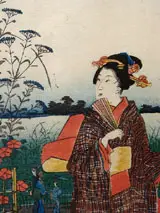 The wealthy townspeople surrounding him were not worried about future salvation but rather enjoyed their materialistic, temporal existences and those pleasures appealing directly to the senses. They lived for the moment : “the fleeting moment” (Williams, 1983: 1). Many prominent art works were produced, and chonin bunka, culture of the townspeople, was fully developed in this period.
The wealthy townspeople surrounding him were not worried about future salvation but rather enjoyed their materialistic, temporal existences and those pleasures appealing directly to the senses. They lived for the moment : “the fleeting moment” (Williams, 1983: 1). Many prominent art works were produced, and chonin bunka, culture of the townspeople, was fully developed in this period.
Legal prostitution
Human passion and its physical expression were not controlled by an abstract moral code, whether ofchivalry or sin, but by aesthetics, by decorum for its own sake. Love was a kind of art for art’s sake, an exquisite piece of theater (Ian Buruma, “The Art of Prostitution”, in Behind the Mask, 1984:78). Geisha literally means a person engaging in art or entertainment. They are professional artists. The geisha are trained to play musical instruments, sing, and dance before making their debut as geisha. They are not prostitutes, but well-educated entertainers. Although the geisha were prohibited from engaging in prostitution, the prohibition was not always observed.
The term Geisha was first used in the Edo period. After the first geisha, Kasen of Ogiya, made her debut in 1762 (Akiyama; 1937, Fujimoto; 1915), the number of geisha increased rapidly. The clients were mostly samurai, but they were gradually replaced by townspeople (Nishiyama, 1997).
Yoshiwara was one of the famous pleasure districts, and the favorite site for the Edo culture such as Ukiyo-e, Kabuki plays, poetry and literature. During the Edo period, prostitution was under the supervision of the Tokugawa government. It was legal, but a license was required. The yujos were women who engaged in sexual activity with customers while the geisha did not. Legal prostitution, in fact, continued until 1957 (Dalby, 1983).
Van Gulik (1982) points out that Japan’s marriage system and the subservient position of women in those days led to the flourishing of pleasure districts. Marriage was a family matter, and arranged between families in order to maintain their family name, social position, mutual interests and obligations. Romantic love, personal preference, and unconstrained social contacts between men and women were therefore usually sought in the entertainment quarters (Van Gulik, 1982: 21).
 The life-style or status of women was based on Neo-Confucian ethics. Sansom (1963) describes this: The worst treatment of all was that to which a woman had to submit. During her life she had to devote herself to what were called the “three obediences” (sanju): to her parents when a child, to her husband when married, and to her children when she grew old. Too much learning was thought to spoil a girl’s character, but in the middle and upper classes some education was approved, in literature, music, and handwriting (p.89). In those days, Japanese men had sex with their wives for procreation, and with the Yujos for recreation (Dalby, 1983).
The life-style or status of women was based on Neo-Confucian ethics. Sansom (1963) describes this: The worst treatment of all was that to which a woman had to submit. During her life she had to devote herself to what were called the “three obediences” (sanju): to her parents when a child, to her husband when married, and to her children when she grew old. Too much learning was thought to spoil a girl’s character, but in the middle and upper classes some education was approved, in literature, music, and handwriting (p.89). In those days, Japanese men had sex with their wives for procreation, and with the Yujos for recreation (Dalby, 1983).
Kishobori – the vow tattoo
The term, irebokuro means tattoo, and was used in the Edo period. Ire or ireru, means to insert, and bokuro or hokuro is a beauty spot. In the early Edo period, tattoo was like a dot, not pictorial yet. Irebokuro originated among the yujos, or legal prostitutes. The custom of irebokuro probably parallels the establishment of legal prostitution (Tamabayashi, 1956). According to Tamabayashi (1956), the major group of people who accepted irebokuro was the yujos, and the second was the geishas. Tattooing was rare among ordinary girls. On the other hand, in the case of the male population, the majority was the yujo or the geisha’s clients or womanizers. Tattooed priests and youngsters were sometimes seen.
Tamabayashi (1956) describes one of the old patterns of irebokuro: a man and a woman hold their hands together, and get a mole-like tattoo on each hand where the tip of the thumb reached. Irebokuro was a reminder for lovers, and showed a vow of eternal love. It is said that some yujos wore tattoos of their lover’s name and the Japanese character for life (inochi). It symbolized the strength of their pledge of love. Tamabayashi also mentions irebokuro in homosexuality between priests and young boys. These tattoos were also called kishobori, the vow tattoo. The yujos were likely to choose to be tattooed on the arm, especially the inside of the arm and near the armpit, not the forearm (Tamabayashi, 1956). Their tattoos probably meant secret affairs, forbidden love or personal desires. The purpose of the yujo’s tattoos was one of serious promise, or nuptial proof, or eternal love, and the pledge of the heart and soul towards sincere love (Tamabayashi, 1956:24). For others, the irebokuro was perhaps just a tool to please and keep their customers, and thus to succeed as a highest ranked courtean.
The Geishas and the Yujos made up strange customs to keep their clients. Several authors (Fujimoto; 1915, Tamabayashi; 1956, Seigle; 1993, Van Gulik; 1982) cite examples of the geisha’s behavior.
1. A woman gave a written pledge to her lover.
2. She tattooed the lover’s name in her arm.
3. She cut her hair.
4. She cut her little finger.
5. She tore off the nail of one of her fingers.
6. She stabbed her elbow or thigh (Fujimoto, 1915: 129).
In the literature of the Edo period, the practice of the pledge letter, tattooing, finger-cutting, hair-cutting, nail-tearing are often described (Seigle; 1993, Tamabayashi; 1956, Van Gulik; 1982). The purpose of the pledge letter was to get a few drops of blood from both the man and the woman (Seigle, 1993). Tattooing was similar to the pledge letter. Many yujosand geishas tattooed themselves to please their customers.
However, tattooing was considered inelegant and indiscreet among high-ranking geisha, and they tended to avoid it (Seigle, 1993). Some customers insistedon it and the geisha were forced to submit. At the same time, they had to know how to erase tattoos. The courtesans cauterized tattoos with moxa (driedherb) and fire (Seigle; 1993, Tamabayashi; 1956,Van Gulik; 1982). The tattoo could be the cause of trouble if the courtesans had several different customers. There are records of the yujos and the geishas repeatedly having to tattoo over or remove old tattoos whenever their customers changed. Finger and hair-cutting, and nail-tearing were more serious tokens than tattooing one’s name because they were obviously visible. The extreme form of love was shinju, double suicide. Many lovers committed double suicides, and this phenomenon peaked from the Genroku era (1688-1703) to 1720′s (Seigle, 1993). By the late Tokugawa era, kishoboriwas no longer popular.
Penal Tattooing
The Tokugawa government had financial problems. Yoshimune became the eighth shogun in 1716, and began to reform the policy. One of the biggest changes was frugality. He himself reduced his expenditures, and ordered all other officials to cut the cost of departments. The townspeople were also forced to lower their standard of living. They were not allowed to wear showy and luxurious garments.
The most crucial shift was the practice of tattooing as a form of punishment in 1720 (Nakano; 199u, Tamabayashi; 1956, Van Gulik; 1982), which replaced the amputation of nose and ears. Tattooing as punishment did not pertain to thesamurai class (Van Gulik, 1982). According to Yoshimune’s code, robbers as well as murderers were sentenced to the death. Crimes such as extortion, swindling and fraud were punished by tattooing. The criminals were tattooed with a black ring around an arm for each offense, or with a Japanese character on the forehead.
The tattoo became a mark of punishment, used by the authorities to ostracize the outlaws from society. While the purpose of this penalty was to identify criminals and repeat offenders, tattooing as punishment became a vicious circle. The tattooed criminals were ostracized by society throughout their whole lives. Some of them abandoned all hope, and sank to a level of despair and a cycle of crimes. Consequently, the penal system formed a solitary minority group, calledeta class, the social outcasts. For this reason, ordinary people became afraid of tattooed people. The people with the penal tattoos often used the records incised on the skin for illicit purposes. They hardly rebuilt their trust in society. Some of them abandoned themselves to despair and repeated crimes. This phenomenon made other people feel frightened and they came to see any tattooed person as a criminal or evil. Therefore, showing tattoos was perceived as a threat to society.
Eventually, the custom of penal tattooing was abolished in 1870 after being practiced for 150 years.
The Origin of Pictorial Tattooing
Pictorial tattoos first appeared after the Horeki era (1751-1764) (Iizawa; 1973, Nakano; 199u, Tamabayashi; 1956, Van Gulik; 1982, Yoshioka;1996). The first stage of the pictorial tattoos was relatively small, and the designs were family crests or evil images such as a severed human head. Even though people began to have a couple of tattoos on their body, each piece was scattered at random, not unified.
The development of the art of ukiyo-e changed the style of Japanese tattoo. The ukiyo-e are pictures of “the floating world,” mainly depicting the landscape, people’s daily life including entertainment such as kabuki-plays or the pleasure quarters. The images were first illustrated in color prints. In the 1650′s woodblock printing began to translate the ukiyo-einto widely available books (Smith, 1988). Forrer (1988) and Hillier (1981) point out the difference between Western drawings and Japanese counterparts. While Western drawings were used in a wide range of materials, Japanese drawings were invariably executed in brush and ink. The limited materials in Japan led to the development of sumie or suibokuga, monochrome ink paintings, and influenced the revival of tattooing. Later, colors were imported from foreign countries.
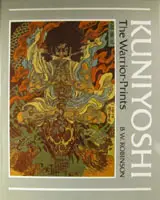 Japanese tattooing was inspired by traditional arts.The brush would be altered to a bundle of tattooing needles. Tattooing became the popular art among the lower class. The Chinese legendary story, the Suikoden, the “Water Margin”, affected the tattoo designs. The Suikoden described the adventures of legendary heroes. It was first translated from Chinese to Japanese by Okajima Kanzanin1757. Many artists described the Suikoden in different versions. Utagawa Kuniyoshi, theukiyo-e artist, illustrated the Suikoden in 1827 and it gained popularity among townspeople. His work is still used as the basis of tattoo designs today. Kuniyoshi’s warrior-prints inspired the development of the full body tattoo.
Japanese tattooing was inspired by traditional arts.The brush would be altered to a bundle of tattooing needles. Tattooing became the popular art among the lower class. The Chinese legendary story, the Suikoden, the “Water Margin”, affected the tattoo designs. The Suikoden described the adventures of legendary heroes. It was first translated from Chinese to Japanese by Okajima Kanzanin1757. Many artists described the Suikoden in different versions. Utagawa Kuniyoshi, theukiyo-e artist, illustrated the Suikoden in 1827 and it gained popularity among townspeople. His work is still used as the basis of tattoo designs today. Kuniyoshi’s warrior-prints inspired the development of the full body tattoo.
The heroes’ bravery and spirit fascinated many people in those days. The characters of the heroes in the Suikoden are full of chivalry. They were not malicious. They robbed to save the weak from evil. Therefore, many Edo citizens’ spirit of iki perhaps shared the Suikodenheroes. The commoners admired those heroes. The most popular figure in the Suikoden wasKyumonryu Shishin, who has tattoos of nine dragons. In competition with each other. Many towns people had dragon tattoos like the Shishin’s. Besides, the image of a dragon was considered to summon water, and was popular among firemen (Tamabayashi, 1956).
There were many fires in Edo city through the Tokugawa period (Nishiyama, 1997), and the system of firemen was well developed. That is why the design of the dragon is often seen. There is no doubt that Kuniyoshi’s illustrations of theSuikoden had an impact on tattoo designs. Tattooing had a great vogue among the lower
orders in Japan during the early nineteenth century, and Kuniyoshi’s warrior-prints were extensively used as designs for this minor art (Robinson, 1961: 21).
There are two reasons why the Japanese full body tattoo was developed: the existence of sumie or, monochromatic ink paintings, and the establishment of clothing fashion. Before the appearance of ukiyo-e paintings, the technique of ink painting was brought to Japan from China. In the early period of pictorial tattoos, only outlines of designs were tattooed. It is called sujibori, outlining. A few colors were used for tattooing: black ink, vermilion and brown (Iizawa, 1973). Tattooing then applied bokashibori, shading, proceeding from the ink painting techniques. The characteristics of this style included the use of gradation and the strength that black ink and a paint brush make. The use of various colors made the designs more colorful and established the pictorial tattooing style.
The idea of the full body tattoo comes from samurai warriors’ costumes called jimbaori, a sleeveless campaign coat (Iizawa, 1973). It looked like a vest and was easy to slip on over armor (Minnich, 1963: 32). The samurai had their favorite patterns on the back of the jimbaori. They tended to like heroic designs and perhaps wanted to show their courage and pride. Some designs represented a guardian deity or a dragon.
The first style of tattoo was done only on the back (Iizawa, 1973). Gradually, the tattoo designs extended to the shoulders, arms, and thighs, and the tattooed pictures finally came to appear on the whole body. Tamabayashi (1956) illustrates typical shapes, patterns and designs of the full body tattoos in detail. Van Gulik (1982) refers to one of the tattoo patterns as munawari. Tattooing over the entire front of the upper part of the torso with the exception of a vertical strip running from the chest to the abdomen, gave the effect of an unbuttoned vest (p.101).om samurai warriors’ costumes called jimbaori, a sleeveless campaign coat (Iizawa, 1973). It looked like a vest and was easy to slip on over armor (Minnich, 1963: 32). The samurai had their favorite patterns on the back of the jimbaori. They tended to like heroic designs and perhaps wanted to show their courage and pride. Some designs represented a guardian deity or a dragon.
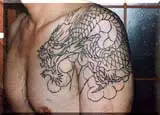
The term, iki, meaning stylishness, smartness or chic, symbolizes the nature of the Edo culture and the spirit of common people. The sense of iki was raised from resistance towards social restrictions and pressure in those days. Common people were forced to wear only plain clothes. There was rivalry with the superior class. Tattooing was born out of a sense of competition. The commoners began to show off iki to each other, and competing iki was called date or date shin(a sense of stylishness). The word, iki in English would be “the coolest” things. Having the full body tattoos was iki, and achieved the peak of popularity. Especially, during the Bunka Bunsei period (1804-1830), the number of tattooed individuals was rapidly growing, and professional tattooists began to appear.
The first style of tattoo was done only on the back (Iizawa, 1973). Gradually, the tattoo designs extended to the shoulders, arms, and thighs, and the tattooed pictures finally came to appear on the whole body. Tamabayashi (1956) illustrates typical shapes, patterns and designs of the full body tattoos in detail. Van Gulik (1982) refers to one of the tattoo patterns as munawari. Tattooing over the entire front of the upper part of the torso with the exception of a vertical strip running from the chest to the abdomen, gave the effect of an unbuttoned vest (p.101).
The term, iki, meaning stylishness, smartness or chic, symbolizes the nature of the Edo culture and the spirit of common people. The sense of iki was raised from resistance towards social restrictions and pressure in those days. Common people were forced to wear only plain clothes. There was rivalry with the superior class. Tattooing was born out of a sense of competition. The commoners began to show off iki to each other, and competing iki was called date or date shin(a sense of stylishness). The word, iki in English would be “the coolest” things. Having the full body tattoos was iki, and achieved the peak of popularity. Especially, during the Bunka Bunsei period (1804-1830), the number of tattooed individuals was rapidly growing, and professional tattooists began to appear.
The Tokugawa government prohibited tattooing in order to control the people’s life and customs. However, it had no effect on the commoners’ attitudes. Some authors explain that merchants were not allowed to wear gorgeous kimonos because of the rigid social system. So they turned to tattooing instead. Tamabayashi (1956), however, argues that the wealthy merchants did not wear tattoos. The majority of tattooed people were townspeople, especially scaffold constructors, rickshaw men, and gamblers. Amongst merchants, who were also a part of the townspeople, the practice of tattooing was rarely seen. The wealthy merchants did not wear tattoos. Even though some merchants with small business such as fish sellers got tattooed, it was exceptional (Tamabayashi, 1956: 184, translated by the author).
Iizawa (1973) states “samurai and upper-class merchants did not have tattoos, but most artisans (labor workers) did get tattooed” (p.167). The samurai or the merchants were more likely to hide their tattoos, because of their social status or position. This probably resulted from the prevalence of Confucianism among the samurai and the merchants.
The Meiji Era (1868-1912) to the Present
The Meiji Restoration (1868) marked the beginning of modernization in Japan. The feudal system was abolished, and Japan absorbed Western culture to cultivate new attitudes and thoughts. The first principles, the Five Articles Oath, had been already enunciated in April, 1868. Morton (1994) states: “Article 4. Evil customs of the past shall be broken off and everything based upon the just laws of Nature” (p.150). He describes “evil customs of the past” as including theTokugawa shogunate and all its works and that the “just law of Nature” is a universal phrase.
This concept was familiar in the West but was also known to the East in fundamental Confucian and Taoist thought (Morton, 1994: 150). Adoption of the new western clothing drastically changed Japan’s daily landscape. Frock coats and bowler hats for men, corseted waists and bustles for women became fashionable – they proclaimed their wearers a new breed of Japanese, persons fully the equal of Europeans and Americans (Dalby, 1993: 9-10).
Japan’s goal was to become a member of the leading nations as a civilized and sophisticated country. The government regarded tattooing as a sign of barbarism, and in 1872, prohibited all tattooing, including the tribal tattooing by the Ainu and the Ryukyu.
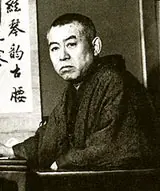 The influence of the ban on tattooing spread to literature. Tanizaki Junichiro, one of the famous novelists in modern period, published a book titled Shisei (Tattooer), in 1910. It is the story of a young tattoo master and a beautiful girl. Tanizaki’s work was originally conceived in a contemporary setting, but later placed in the
The influence of the ban on tattooing spread to literature. Tanizaki Junichiro, one of the famous novelists in modern period, published a book titled Shisei (Tattooer), in 1910. It is the story of a young tattoo master and a beautiful girl. Tanizaki’s work was originally conceived in a contemporary setting, but later placed in the
Edo period (McCallum, 1988: 134).There was perhaps social pressure in those days.
Ironically, the prohibition of tattooing applied only to the Japanese, not to foreign people. Many visitors from overseas were impressed by Japanese tattoo designs. Sailors, from the highest to the lowest ranks, got tattooed when they arrived in Japanese ports. Burchett (1958) tells about meeting one Japanese tattoo master, Hori Chyo in the Meiji era. According to Burchett (1958), Hori Chyo had tattooed many British aristocrats, including the Duke of Clarence, the Duke of York (later, King George V), and the Czarevitch of Russia (later, Czar Nicholas II). As a result, Japanese tattoos were exported to oversea countries, and gained a reputation outside of Japan. Nakano (199?) cites newspaper articles regarding popularity of Japanese tattoos in the West.
In 1948, the prohibition of tattooing was lifted. However, tattooing was outlawed among youths below the age of 18 in a bid to protect minors, and those who encouraged minors to get tattooed were penalized (Nakano, 199?).
Because of its historical background, the practice of tattooing retains a negative and dark image in Japan today. Some tattooists do not have signs for their studios even though tattooing is now legal.
Nakano (1988) reveals how tattooing is viewed in Japanese society. A sumo wrestler, while wrestling, covered his tattoos on his left arm, and a professional boxer, Mike Tyson, hid his tattoo to appear in a Japanese commercial (Nakano, 1988).
Nakano (1988) herself is the wife of a tattoo master, and her body is covered with tattoos. She says that people are scared of her tattoos after discovering them on her body. Of course, she does not mean to scare them.That is a typical reaction towards the full body tattoo in Japan.
Nakedness
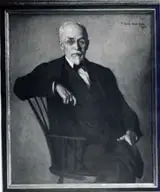 Brain (1979) writes about the connection between Japanese tattoo and nudity. The Japanese use tattooing to give personality to the naked body. A nude to them has never been considered “divine” or even beautiful as it has in the West. The sight of the naked body really does not have the slightest charm. So erotic drawings never depict naked people and erotic women are never nude. A man or woman tattooed by the irezumi artist is never defenselessly nude without clothes. In fact tattooing “clothes” a Japanese (p.64).
Brain (1979) writes about the connection between Japanese tattoo and nudity. The Japanese use tattooing to give personality to the naked body. A nude to them has never been considered “divine” or even beautiful as it has in the West. The sight of the naked body really does not have the slightest charm. So erotic drawings never depict naked people and erotic women are never nude. A man or woman tattooed by the irezumi artist is never defenselessly nude without clothes. In fact tattooing “clothes” a Japanese (p.64).
Hiler (1929) also states that tattooing in Japan was substituted for clothing: “In Japan nothing immodest is found in the fact that the sexes bathe together in a state of absolute nudity, but any representation of the nude in art is considered indecent (p.5).
My question is whether the purpose of the Japanese tattoo is to hide the naked body because nudity is embarrassing. Nomura’s article, “Remodelling the Japanese Body” (1990) provides answers to this question. He gives an example of the American zoologist, Edward Morse’s(left) work, Japan Day by Day (1917). Semi-nakedness was a natural part of the landscape in Japan at that time.
Morse’s intellectual interest was aroused by all kinds of things and manners Japanese. In particular, he seems to have been strongly impressed by the fact that the Japanese often lived in a semi-naked state. He repeatedly notes the steaming bodies of rickshaw men resting after a ride; a woman in only a loincloth lying down with a baby to make it go to sleep; fishermen with just their fundoshi (loincloths) on mending their nets. Naked bodies appeared to Morse’s eyes everywhere in the Japanese landscape (pp.259-260).
Nakedness used to be an accepted part of daily life. The Japanese were accustomed to seeing nudity. It did not always imply eroticism. As Hiler (1929) mentions, the Japanese have the habit of bathing. In those days, people did not have a bathtub at home. They usually took a public bath. Tattoo wearers took more time for a bath to show their tattoos proudly. Besides, there were many jobs in which the workers exposed most of their bodies: rickshaw men, fisher people, firemen, ama (women divers) or carpenters were all semi-naked or naked. Both males and females did not care about being naked in public.
Imagine sumo wrestlers. They still wrestle in the traditional way. Their nakedness was a part of their job. Nomura (1990) also mentions that there was a travelogue which naked peasants showed up in the early modern times. The scene of nakedness was very natural to the Japanese. Probably, tattooed people were often seen as well.
.In terms of aesthetic views, however, Japan has different ways of expressing eroticism from the West. Michener (1954) explains that ukiyo-e avoids nakedness and foregoes slick suggestiveness (p.202). It does not mean that ukiyo-e ignores eroticism, but rather, it is free of erotic content (Michener, 1954).
It is often said that in Japan naked parts denote coquetry only when set in the context of the tension resulting from the relationship between the naked and covered parts. For example, the simple exposure of private parts is not immediately connected with coquetry (Nomura, 1990: 262).
The Yakuza and Tattooing
The yakuza are notorious Japanese syndicate members. Their history dates back over 300 years. Their origin can be traced back to the Edo period (Kaplan and Dupro, 1986). The ancestors of the modern yakuza used tattooing as a mark of status.
Tattoos are the greatest trademark of the Yakuza. When we go to see a yakuza movie, for instance, the tattooed yakuzaoften show up. Rome (1975) refers to the modern yakuza as the title “The Tattooed Men,” and describes a typical scene in a yakuza movie: There is a gambling scene where somebody cheats, is discovered, the kimonos are dropped from the shoulders revealing tattoos (cheers from the audience), swords appear and blood is spilled.” (p.213)
Kaplan and Dupro (1986) state that approximately 73 percent of the Yakuza have tattoos. Among the Yakuza, undergoing tattooing was a test to show their strength. The traditional Japanese tattoo takes a long time to complete. To wear the full body tattoo, one needs patience to endure the time and pain. For some Yakuza, tattoos are a proof of strength, courage, toughness and masculinity. Besides, wearing tattoos makes them feel a sense of solidarity as a member of the organization. Such tattoos mean loyalty or faithfulness towards the organization.
Although the yakuza began to accept tattoos as their custom in the Edo period, it was not an outstanding figure in those days. Following Japan’s economic growth, the Yakuza population rapidly increased, and became more often involved in criminal activities. Because of the outlaws’ path, we are likely to associate tattooing with the Yakuza, and eventually the fixed notion that tattooing has a criminal aspects was built up.
However, in recent years the number of the yakuza with tattoos has been decreasing. Because of increased law enforcement, the yakuza have lost many their sources of income. Moreover, Kaplan and Dupro (1986) point out that the nature of the Yakuza has been changing. Although devoting one’s life to the organization was the way to survive in theYakuza world, today’s young Yakuza become less obedient at each step. The younger Yakuza are forsaking the full-body pictorial tattoos. They opt instead for a simple line drawing or phrase on their upper arm, more similar to the tattoos of Western youths. The reason, says researcher Hoshino, is not a change in aesthetics: the old-style tattoos cost a fortune, and are simply no longer worth either the physical or financial stress (Kaplan and Dupro, 1986: 273).
Since the Act for Prevention of Unlawful Activities by Boryokudan (syndicate) members was passed in 1992, the influence of the Yakuza has weakened. According to recent reports (Asahi shinbun, 1997), many Yakuza try to remove their tattoos and have operations to replace missing fingers in order to return to mainstream society. Moreover, an article in a current magazine (Vollmann, 1999) tells that one Yakuza continued to be untattooed. When he was young, his boss had forbidden him to be tattooed on the grounds that fashions change (p.77). Thus, even the Yakuza themselves admit that their tattoos are not acceptable. People with tattoos are likely to be stigmatized and regarded as misfits in Japanese society. There is another interesting response about tattoos by the Yakuza boss (Vollmann, 1999). The interviewer asks if the Yakuza wear certain types of tattoos. The Yakuza boss replies: “No, you can’t tell. We’re not a tribe.” (Vollmann, 1999: 78).
To be tattooed in Japan is to abandon conventional society and go into the underworld. It is true that some Yakuza tend not to have tattoos. Tattooing is no longer used as either a test of strength or a sign of solidarity among the Yakuza.
Bath Girls and Tattoo
Tattoos and sensuality are often connected. Nakano (1988) in her book titled Irezumishi no onnatachi (the wives of tattooists) states that tattoos have sex appeal, uncovering the practice of tattooing among Japanese women involved with the sex industry. ”Soapland” is a place which men come in and choose a bath girl to have sexual pleasure with. “Soap” refers to a bathtub or bathroom. “Soapland” refers to the bathhouse with the brothel. However, technically, sex activities are not involved with this business. If the soap jo, bath girl of the soapland had tattoos, she would have been regarded as a “defective” product (Nakano, 1988). However, the number of tattooed girl-lovers has increased recently in order to satisfy their desire. The tattooed soap jos are becoming popular (Nakano, 1988). Some soap jos want to be covered with tattoos for their job.
One-point Tattoo
Contemporary tattoo style evolves from the West. Tattooing is treated as a body art and is gaining popularity among young people. “One-point tattoo” means getting only one tattoo, and is often used among young Japanese. Some Japanese choose to wear skulls, roses or hearts. The fashion in the entertainment world affects Japanese youth culture. For instance, my friend was a fan of a rock band and got a rose tattoo which represents a symbol of the band. Recently, Japanese entertainers with tattoos often show up on TV or in magazines. One Japanese pop singer has a tattoo of a bar code on her wrist, and the young tend to follow her style.
Nakano (1988) also states that tattooing has become more popular among Japanese females than males. Tattooing in Japan used to be dominated by males, but the tattooed female population is increasing. Females tend to be more keen on fashions than males, and tattooing is accepted as a fashion among Japanese women (p.195).
The attitudes towards the one-point tattoo and the full body tattoo are, more or less, different. Unlike the full body tattoo, the one-point tattoo is more acceptable as a fashion trend among the young in Japan.
Ethics in Japanese Adornment
According to a recent article in a Japanese newspaper, tattoos and body piercing are regarded as an ultimate fashion, a form of self-expression and a physical transformation of the body in Japanese youth culture (The Daily Yomiuri, 1994). However, the permanent fashion does not entirely satisfy every customer. While the customers are pleased with getting the tattoo, they still consider Japan’s cultural code. A young man is not perfectly comfortable with his tattoos. He can no longer wear a white shirt when commuting because it is visible through the fabric. Another 21 year-old man regrets his tattoos: “If you’re interested in new fashion, remember that tattoos are forever” (The Daily Yomiuri, 1994).
The cultural code is still a big part of Japanese ethics. The body arts such as body piercing, henna painting, nail decorating and temporary tattoo are gaining more popularity than real tattoos in Japan (Saito, 1997). Besides, contemporary young tattooists are beginning to use computer technology to create new tattoo styles. Images are graphically designed on the computer and made into a transfer for temporary tattoos. The customers are able to wear real photo-like tattoos. The temporary tattoo is an attractive item for Japanese teenagers. The sales of the temporary tattoos have skyrocketed (Saito, 1997). People can enjoy tattoos as fashion without any risk of breaking cultural code.
From One-point Tattoo to Tatuu
Recently, tattooing seems to be more popular among Japanese people than a few years ago, not as just “one-point tattoo,” but as tatuu(tattoo). Tatuu is a Japanese-English term, coming from the English word, “tattoo.” Japanese often use tatuu instead irezumi or horimono . A magazine article describes the current tattoo situation. Many Japanese tattooers and tattooees gathered in Osaka for a photograph convention held by a magazine publisher in April, 1999 (Mori 1999). They showed off their tattoos proudly, and tended to compare and compete with others: “My tattoo cost more than yours!” According to this article (Mori, 1999), the number of young Japanese tattooists who learned tattooing in the West is growing. While the Western designs are becoming popular among young Japanese, the Japanese traditional style is highly appreciated among tattoo-lovers. Japanese people often use these terms, youbori and wabori to distinguish tattooing styles. Yobori means the Western style of tattoos.
For example, the designs of this style are flowers, animals, cartoon characters and much else, and such tattoos are usually done by machine. On the other hand, the term wabori meaning “Japanese style,” refers to ukiyo-e pictures. They are dragons, carp, Buddha, maple leaves or peonies. Many traditional tattooists also use tattooing machines, but in a traditional way. Japanese tattooing used to be done by hand. Tebori , tattooing by hand, requires special technique, and only a few traditional tattooists can offer tebori. A big difference between Western and Japanese styles is a background of designs. In western style, the designs usually do not have a shaded background, but the Japanese style has such a background. (copyright 2000 by Mieko Yamada)
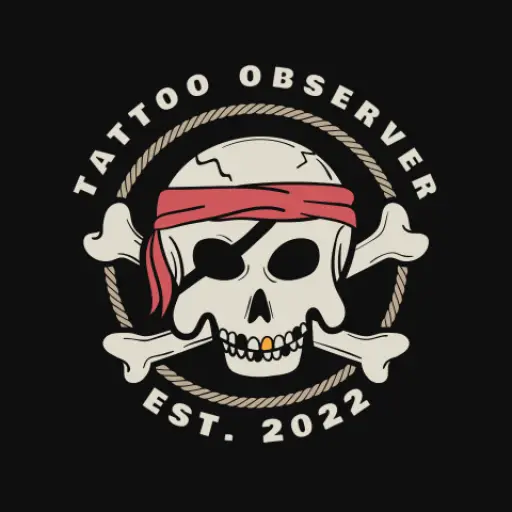


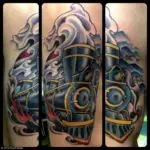


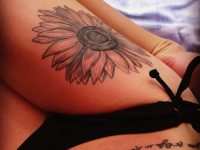

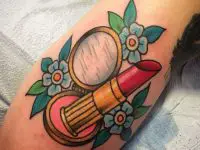
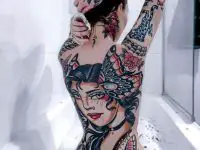
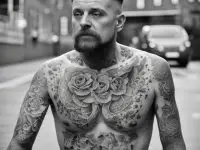

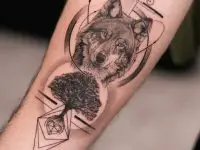
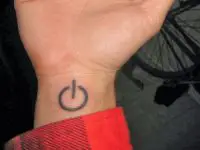
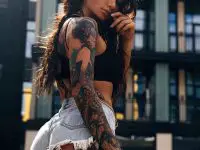


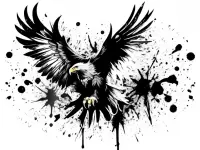
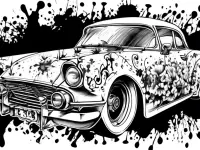
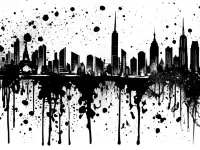

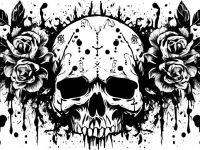


0 Comments